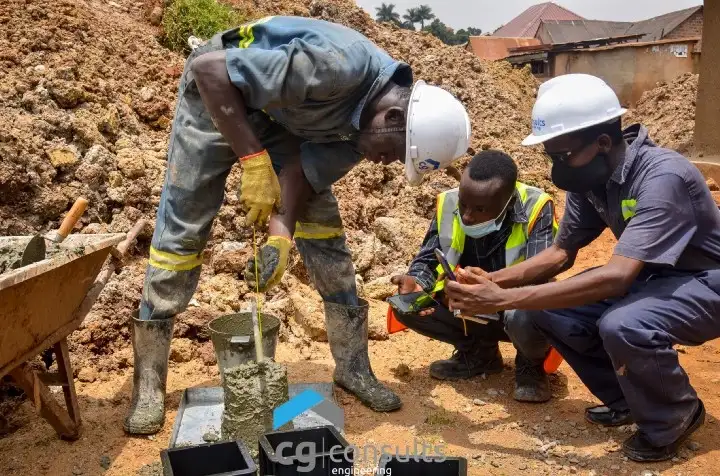Introduction
The triple constraints in project management include quality, cost and time. Each project’s objective is to be successful within this triple constraint. Quality management on construction projects includes managing aspects of design, workmanship and materials which all interact in order to create the final product. In the face of defects, there is always a need to determine the standard of quality expected, the cause of the fault -design, materials and/or workmanship, and who is liable-whether there is a unitary or split responsibility. This article explores the different aspects of quality management and the impact of the Sale of Goods and Supply of Services Act, 2018 on quality management. Reference will be made to the FIDIC and PPDA forms of contract which are the major standard form contracts used in Uganda.
Standard of Work
The Contractor’s basic obligation, so far as the standard of work is concerned, is to comply with the terms of the contract. This includes both the express and implied terms. Express terms include provisions in standard form contracts such as Sub-clause 7.1[Manner of Execution] of FIDIC forms of Contract and clause 16 of the PPDA forms of Contract while implied terms include those provided for by statute. The standard of work required on a construction project can be explored in three separate, albeit linked, ideas which are subsequently discussed below.
1.Workmanship
The standard of workmanship may be defined in considerable detail by the contract, for example by requiring it to comply with an appropriate code of practice. Under PPDA Contracts, such a requirement is in clause 16.1 which states that “The Contractor shall construct and install the Works in accordance with the Specifications and Drawings.” Under the FIDIC forms of Contract, Sub-clause 7.1 [Manner of Execution] obliges the Contractor to “…carry out the works in a proper workmanlike and careful manner, in accordance with recognized good practice…”
A similar, if not identical, obligation would be in any case implied by law since, in the absence of any express terms covering this issue, the courts will imply a term in the contract that the work will be carried out with proper skill and care, that is to say, in a “workmanlike” manner. This can be the case for PPDA forms of contract which are not as descriptive as the FIDIC forms of contract on this issue.
2.Standard of materials
Sub-Clause 1.1.5.3 of the FIDIC forms defines Materials while Sub-clause 7.1 [Manner of Execution] of FIDIC forms states that the manner of execution should be with properly equipped facilities and non-hazardous materials. PPDA form of contracts defines materials in clause 1.1(w) but are not as expressly descriptive about the standard of materials to be used in the construction process.
In the case of Young & Marten Ltd v McManus Childs Ltd [1] it was held that a contractor will be liable if materials are unsatisfactory, even where it is the employer who has selected those materials (for example by nominating a particular supplier). However, it has also been held in the case of Gloucestershire CC v Richardson [2] the contractor will not be liable for defective materials where they were forced by the employer to obtain those materials from a supplier who, to the employer’s knowledge, excludes or limits liability for defects.
3.Suitability of materials
Even where materials are of satisfactory quality, in the sense of being free from defects, they may still not be fit for the purpose for which they are used. In this case, it is possible for the contractor to be liable, but the term to be implied here is of a more limited kind. Section 15 of the Sale of Goods and Supply of Services Act, 2018 implies a term that goods shall be reasonably fit for the purpose for which they are supplied, but only where it is clear that the recipient is relying on the skill and judgement of the supplier. Such reliance on the contractor and thus liability for unfit materials can only be found where the contractor has the choice of materials. As such, there will be no such implied term in respect to materials specified by the employer or the contract administrator because in that case, there is no reliance on the contractor.
Responsibility for Design
Whereas the traditional contract delivery systems draw a strict dividing line between the functions of design and construction, there has been an increased uptake for design and build projects where the contractor takes on both functions on a construction project. This contrasts sharply with the traditional method where design was under the ambit of the employer and construction under the ambit of the contractor. As such, there is a need to establish a standard of liability for design.
Standard of liability for Design
One of the most interesting questions concerning a designer’s duty is whether it is limited to an obligation to use reasonable skill and care or whether it goes beyond this to a guarantee that the design will be fit for its purpose. If the former is correct, it means in effect that a designer will only be liable if professional negligence can be proved. The latter interpretation, on the other hand, would impose on the designer a type of liability equivalent to that of a seller or other supplier of goods. The courts have made it clear that a guarantee of “fitness for intended purpose” will be implied into a design and build contract in the case of Greaves & Co (Contractors) Ltd v Baynham Meikle and Partners [3]. It must be recognized that the traditional legal position favours liability on the part of a “pure designer” only where there is negligence as it was held in the case of Hawkins v Chrysler (UK) Ltd and Burne Associates [4].
The implication of a strict “fitness for the purpose” obligation into design and build contracts will not be negated by the mere fact that the actual design is carried out by a sub-contractor nominated by the employer.
However, where it is clear that the employer has placed no reliance whatsoever on the main contractor in respect of the design, there will be no implied term as seen in the case of Norta Wallpapers (Ireland) v Sisk & Sons (Dublin) Ltd[5]. While it may indeed be easy for a court to imply the higher standard of obligation into a design and build contract, this cannot override any contrary express terms between the parties.
The FIDIC books principally split the design and build functions in the Red and Pink Book but provide for design and build with the contractor in charge of both design and workmanship in the Yellow and Silver Books. Subclause 4.1[Contractor’s General Obligations] allows for the Contractor to execute and complete the Works in accordance with the contract. However, for the Red and Pink books, it also makes a provision for the possibility that the Employer may wish that the Contractor designs a part or parts of the Works. Sub-clause 5.4 [Technical Standards and Regulation] requires that the design must be compliant with the Country’s technical standards and laws applicable to the product being produced from the Works.
In the Yellow Book, the Contractor’s design obligations are set out in Sub-clause 4.1 and repeated under Sub-clause 5.1[General Design Obligations]. The PPDA forms are not as descriptive about the design aspect for works in comparison to the FIDIC forms however they provide for the Contractor to be responsible for design of Temporary Works under clause 18.2. The requirement is for the Drawings from the Contractor in that instance to be compliant with the Specifications and Drawings in the Statement of Requirements.
Impact of the Sale of Goods and Supply of Services Act, 2018 on quality management
From the foregoing, it is true that two standards apply, that is, “reasonable skill and care” for the “pure designers and “fitness for purpose” for design and build contractor. The reasonable skill and care standard relates more to supply of a service by a designer or engineering team while the fitness for purpose standard is an apparently higher standard for a contractor as it relates more to sale of goods.
Given that the construction contracts are meant to be conducted under the ambit of the law, and for the case of FIDIC forms which give express provision for compliance with laws relating to the product being produced from the Works under Sub-clause 5.4, the Sale of Goods and Supply of Services Act 2018 implies terms in construction contracts.
The Sale of Goods and Supply of Services Act 2018 implies in Section 15(3) that the goods supplied under the contract should be of satisfactory quality. It further defines goods of satisfactory quality in section 15 (5) as those that meet the standards that a reasonable person would regard as satisfactory, taking into account any description of the goods, the price and all the other relevant circumstances. As such, materials supplied to construction projects must be of satisfactory quality and must fit within this definition.
Quality of goods is further defined in section 15(6) to include:
- their state, condition, appearance and finish;
- their fitness for all the purposes for which goods of the kind in question are commonly supplied;
- safety; and
- durability.
The first effect of this Section is that it recognizes the two standards of “reasonable skill and care” and “fitness for purpose”.
The effect of this Section, in my opinion, is that it enforces implied terms for workmanship and design. Given that it is arguable that workmanship refers only to the standard of the final item, Section 15(6)(a) expounds on quality of the product from executing of works and therefore provides implied terms as to the quality of the finished product on construction projects.
This can be of particular importance for PPDA form of contracts which are not as descriptive as the FIDIC contracts on this aspect. This section proceeds to recognise that for the sale of goods contracts for instance design and build projects, there is an implied obligation to the contractor to satisfy the fitness for purpose standard.
The Act therefore places a higher standard of obligation on a contractor in design and build projects. The FIDIC forms expressly provide for the Works to be in accordance with the law that governs quality of finished products and therefore this higher standard will be recognizable on projects using the FIDIC forms. Whereas the PPDA forms do not have the same express provision, it can be an implied term by Statute.
Conclusion
In conclusion, the Sale of Goods and Supply of Services Act 2018 contains implied terms that govern quality management on construction projects in the light of the fact that both design and build projects plus the traditional project delivery method contracts lie within the ambit of this Act. The Act provides wide ranging provisions that not only govern the quality and suitability of materials supplied but also the quality of workmanship and fitness for purpose of the finished product. Indeed, the FIDIC forms of contract expressly provide for the standards of quality provide for in the Act to be met by the contractor in Sub-clause 5.4 while the same terms can be implied in PPDA forms of contract which do not have the same express provision.
[1] [1969] 1 AC 454.
[2] [1969] 1 AC 480.
[3] [1975] 3 All ER 99.
[4] (1986) 38 BLR 36.
[5] [1978] IR 114



